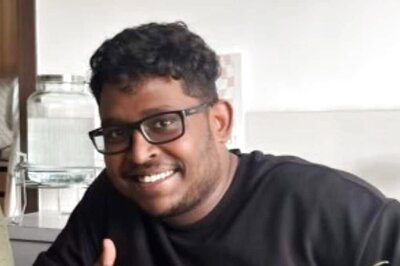
views
In December 2020, there was an unmatched increase in the price of an LPG cylinder. In just 12 days, the amount went up from Rs 544 to Rs 644. However, the upper middle class metropolitan residents were unperturbed. Most of them have piped natural gas (PNG) connections in their home. The price of PNG, instead, reduced from Rs 28.55 per standard cubic metre (scm) to Rs 27.50 per scm since October 2020. When LPG cylinders used to cost Rs 538, the same quantity of PNG came at a price of Rs 375. Nevertheless, the drawing rooms of the affluent class would still examine the efficacy of LPG subsidies payable to the underprivileged. There would be a conspicuous silence on the fact that there is a parallel cheaper infrastructure exclusively for one class. Is this not a subsidy or a form of reservation?
From January onwards, every year, every affluent class family with 4-6-year-old children would be complaining about the reservation for the economically weaker section in private schools. That poor families cannot afford the school fees to get their children admitted in many famous private schools is, of course, not their concern, for their wealth entitles them to that right. Often the fees are not the only barrier for poor families. Admission norms further privilege the privileged. There are extra points for children whose parents are alumni of the same school; whose siblings are already in the school; whose parents are professional degree holders and know English and multiple languages. This class flashes its wealth and also sets the rules so that this education infrastructure is its privilege, and yet, it does not consider this as reservation.
Similarly, getting a confirmed ticket in trains had always been a task for everyone. But there was a Tatkal system. Confirmed tickets were made available for a reasonable additional charge. Now there is a Premium Tatkal scheme. A Premium Tatkal sleeper ticket from Kannur to Thiruvananthapuram would cost as high as Rs 1,100, the fare for the same ordinary sleeper berth being Rs 305 and Tatkal at Rs 420 (Mathrubhumi, 5.12.2019). The scheme covers around 1.71 lakh seats in 2,677 trains, out of the total of 11.57 lakh seats. The affluent class has thus reserved for itself an exclusive travel segment (15%) in railways; and yet it is not named as reservation?
There are many other examples. For decades, there exists the system of management quota. A student gets just the pass mark in his class XII exam, but the affluent class feels payment of capitation fees entitles it to engineering and medical seats. Does this not compromise merit or not lead to exclusion of meritorious students who are not able to afford capitation fees? But these questions around merit are made to haunt only the reservation that is available for SCs and STs. Similarly, the media spends a lot of time on encroachments by the poor into public spaces. Have they ever spoken about the way a number of playgrounds have been converted into parking spaces in different posh colonies? Is this not an encroachment? Community centres across posh localities are well-resourced. They are often maintained by the same municipal corporation, which does not resource a similar centre near slum locations. Resources are the same. Officials are the same. Isn’t the so-called good governance also ‘reserved’ for the affluent section?
Now, who live in these posh localities, own PNG connections, afford to pay capitation fees or create admission norms that favour themselves to put their children in resourced private schools or do not bother paying excessive amounts for premium tatkal tickets? At 2012 prices, if a household is earning Rs 50,000 per month or more, it is among the richest 0.6 % of the Indian citizenry. Many of us are in this income bracket. And the probability that this household belongs to the dominant caste is absolutely very high. Nitin Bharti, through his remarkable paper, proved that “Brahmins and non-Brahmin forward caste households earn 48% and 45% above the national average respectively, whereas SC and ST households earn 21% and 34%, respectively, less than the national average”.
This affluent class, despite receiving all these privileges, constantly complains about reservation and subsidies that are constitutionally available to the SC, ST and OBC. It always puts the efficacy of the instrument of positive discrimination-based reservation system under the microscope. By repeatedly citing and focusing on examples of ‘their’ children not being able to access government jobs and college seats, it has successfully located itself as victims of the reservation system. Now, when one explores who these children are, the response would be: what about children of poor parents from the general category? So, by identifying themselves with poor families of general category, this affluent class exposes its caste character. Now, this class has started making inroads into the formal reservation system by demanding reservation for the community that it predominantly belongs to. Jats and Marathas are demanding reservations. Many dominant castes in Tamil Nadu already have access to reservations. A lot has been spoken about the recent 10% reservation for economically weaker sections among the general category, but rarely is there a discussion on the way the dominant castes have managed to secure formal publicly funded privileges, mostly in the last ten years. The following are some of the examples of the state-sponsored Brahmin Welfare Boards in a few states, for they are more endowed than many other caste-based boards set up by various governments.
The executive committee of the government-supported Telangana Brahmin Samkshema Parishad met twice (May and October 2020) in the midst of the pandemic and approved a subsidy of Rs 9.6 crore to 372 Brahmin entrepreneurs. It also approved Vivekananda Overseas Education Scholarship of Rs 20 lakh each to 57 Brahmin students. Incidentally, this scheme borrows the guidelines from Dr Ambedkar Overseas Education Scheme of the state government available for SCs and STs. The scheme exclusively for Brahmins, of course, gets a new name after Vivekananda. In February 2020, before the pandemic lockdown, the Telangana administration approved a similar scholarship for 37 tribal students. It is pertinent to note that since 2013, only 138 tribal students have received this scholarship. Brahmins form 3% of the state population, while tribals are almost 9% .
The Andhra Pradesh Brahmin Welfare Corporation, during 2015-16 to 2018-19, has supported 1.41 lakh Brahmins with grants worth Rs 216.4 crore. This includes overseas fellowship for 224 Brahmin students. Another 155 students were provided Rs 2.16 crore for pursuing Vedic education. In fact, Rs 1.5 lakh each was provided to two Brahmin brides for marrying the Brahmin boys in the profession of purohityam. Further, funeral expenses of Rs 10,000 each were provided to 3,093 households. The government has also set up AP Brahmin Credit Cooperative Society with a corpus of Rs 50 crore. 8,022 Brahmin women received a support of Rs 12 crore; and 4,474 Brahmin men received support of Rs 6 crore for their economic empowerment. Even Maruti Swift Dzire cars were distributed to 30 unemployed Brahmin youth, where the beneficiary had to pay just 10% of the cost of the car. The Brahmins probably have additional pressure to set high ‘benchmarks’ even in the kind of privileges the state could offer to them.
The state of Karnataka, where Brahmins constitute just 4% of the population, was a late starter. In March 2019, the government set up the Karnataka State Brahmin Board with a seed capital of Rs 20 crore. In September, 2020, it announced free 7 months online coaching for UPSC exams. It also approved Rs 31,000 each to Brahmin beneficiaries for a housing scheme. It has now proposed a Rs 200 crore budgetary allocation for the board, for implementing its various initiatives including aid for marriages and other ritual ceremonies. Recently, this board demanded the removal of passages in the school textbook that said that food scarcity was caused during the Vedic period because of sacrifices of agricultural animals and milk and ghee offerings to the fire god during havans done by Brahmins. In December 2020, the government faithfully obeyed their demand. The state of Himachal Pradesh, where Brahmins constitute 5% of the population, also has a Brahmin Kalyan Board, with 139 members across different districts. Just two of them are women. In March 2017, under the chairmanship of the-then chief minister, the board meeting was held. The 18-page detailed minutes are available online, which detailed the process with which the CM responded to the demands of each board member, and decisions were taken on the spot. Many decisions were related to public infrastructure including renovation of temples at public cost.
A number of religious places have anyway become the exclusive domain of dominant sections. Religion has been reduced to transaction, wherein if one pays fees and ‘donations’, one has entitlements inside the religious place. Now, what really happens is that the fees and contribution becomes an alibi to exclude those at the margins, often on the basis of caste. Dalit and tribal hamlets were not allowed to contribute to their construction funds. Further, various public land parcels are exclusively reserved for the dominant caste, where Dalits cannot cremate or bury or even use the public street for funeral processions. Socio-cultural norms get cited to explain this form of reservation.
It is not that there is no attempt to counter the ‘privileges’ enjoyed by them. The temple priests in almost all the major temples around the country, especially those funded by the governments, have been exclusively recruited among Brahmin men. In Kerala, one is witnessing a gradual shift. A few non-Brahmins have now been appointed. Even, the Tirupati Devaswom Board has trained 200 persons from Dalit and backward communities in priesthood. However, it was unable to appoint any of them into its existing temples. It has instead decided to build 500 new temples near SC, ST and fisherfolks’ colonies to appoint them. The solution is being found within the four walls of the caste system. Similarly, in Tamil Nadu, in 2006, a total of 206 non-Brahmins joined six training schools located across the state to receive instruction to become priests. Only one of them succeeded in getting employment after 12 years; others are still awaiting employment orders. Similarly, in 2019, the Banaras Hindu University appointed Professor Firoz Khan in its Sanskrit Vidya Dharma department. Even when appreciations were pouring in, within a week, the ABVP students went on strike against the appointment. Prof Khan resigned in a few days and is teaching Sanskrit in another department. So, universities would now be hesitant to recruit non-Hindus, even though the rules allow them, and they are ‘meritorious’ and have the knowledge and expertise in Sanskrit.
What does all this mean? Firstly, there are a number of examples of privileges that are enjoyed by the affluent class, which are subsidies, encroachment and reservations. These privileges are camouflaged as cultural norms and market principles and not called reservation. They are consciously invisibilised. Instead, what is constantly discussed is the reservation that is applicable for Bahujans in Lok Sabha, assemblies, government jobs and education institutions. These are discussed so pejoratively that communities are further othered and stigmatised.
Secondly, the key question asked is whether this statutory reservation would continue forever. How long should the reservation continue? It is actually not difficult to answer this question. Look at the composition of the important non-ceremonial public institutions, where there is no reservation for SCs and STs. The 22-member Union Cabinet has two Dalit representatives. There is one Dalit among 89 secretary-level officers in the Union Government. Between 2010 and 2019, we did not have a Dalit Supreme Court judge. Only one judge appointed to the Supreme Court in this decade is a Dalit. Seven Bharat Ratna recipients that got decided in this decade were all Brahmins. The GST Council has no representation of Dalits. The 14-member high-profile committee that is going to define the cultural past of the country has no representation of Dalits or tribals or women. There are only 17 Dalit MPs (around 7%) in the 241-member Rajya Sabha. Only ten states have elected Dalit members to the Rajya Sabha. So, if these public institutions were to become diverse based on gender, caste and tribal status, without reservation, there is probably a case to discontinue reservation. Similarly, there are also open-category seats in those domains where there is reservation. Until there is a reasonable presence of diversity among those selected in open-category seats, should the reservation not continue? The problem has been about the way reservation has been, conceptually, reduced as benefits to communities at the margins. Reservation is essential to build credibility of the public decision-making institutions by making the institutions diverse and acceptable to all. Reservation is primarily for the benefit of the public institution and not the community.
The next decade is going to be the decade of reservation. Reservation as an instrument of protective discrimination has become defensive. However, subsidies and the reservation that the privileged enjoy, camouflaged as cultural norm and market principle, have now come out of the closet. The affluent class, with its caste character, has formally encroached into the public funds with confessed casteism. It is sometimes appealing to approve this exposed caste-based confrontation as better than the invisible casteism of the past decades. However, one needs to keep in mind that spaces for dialogue and negotiations are also shrinking. There is no level playing field for all narratives. Some probably fear that there may even not be a playing field.
(The author is currently Director, Partners in Change, New Delhi, and Honorary Fellow, Durham University, UK. Views expressed are personal.)
Read all the Latest News, Breaking News and Coronavirus News here




















Comments
0 comment